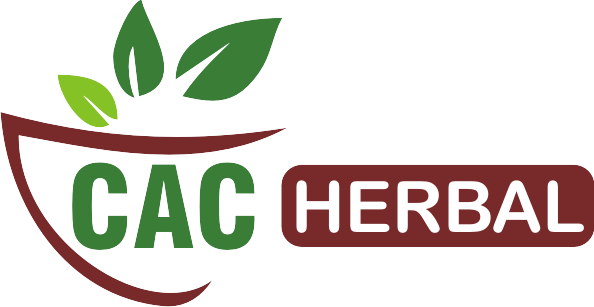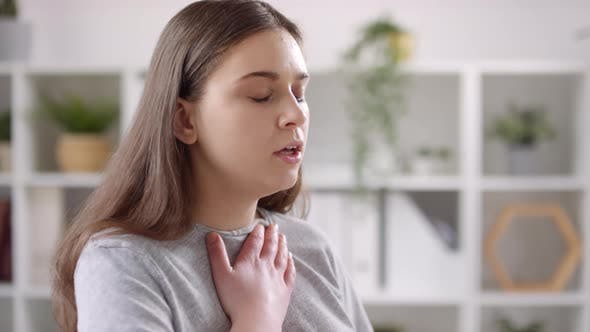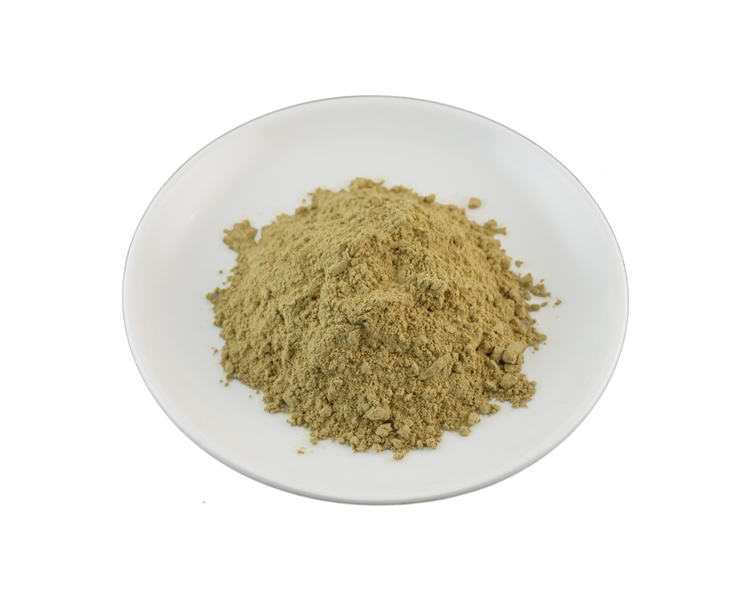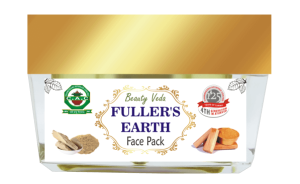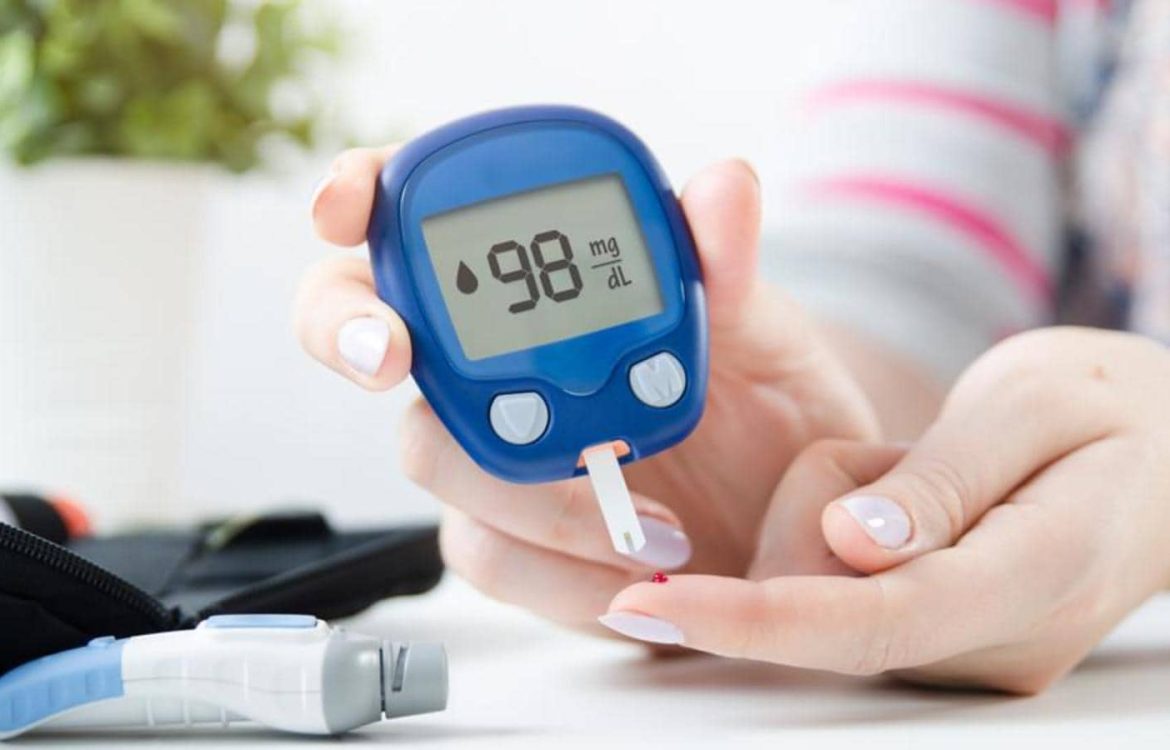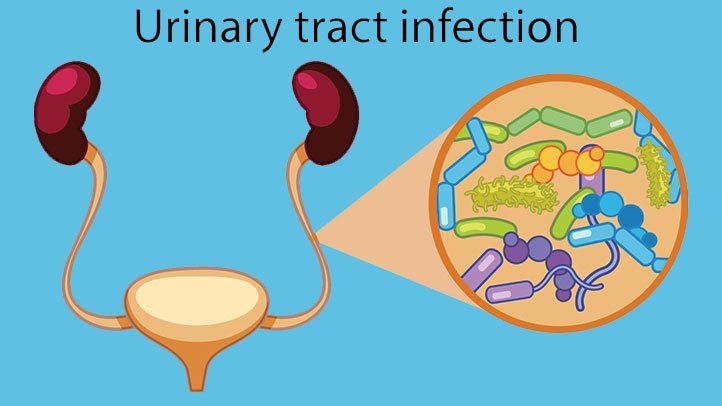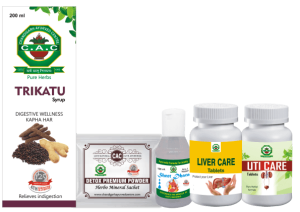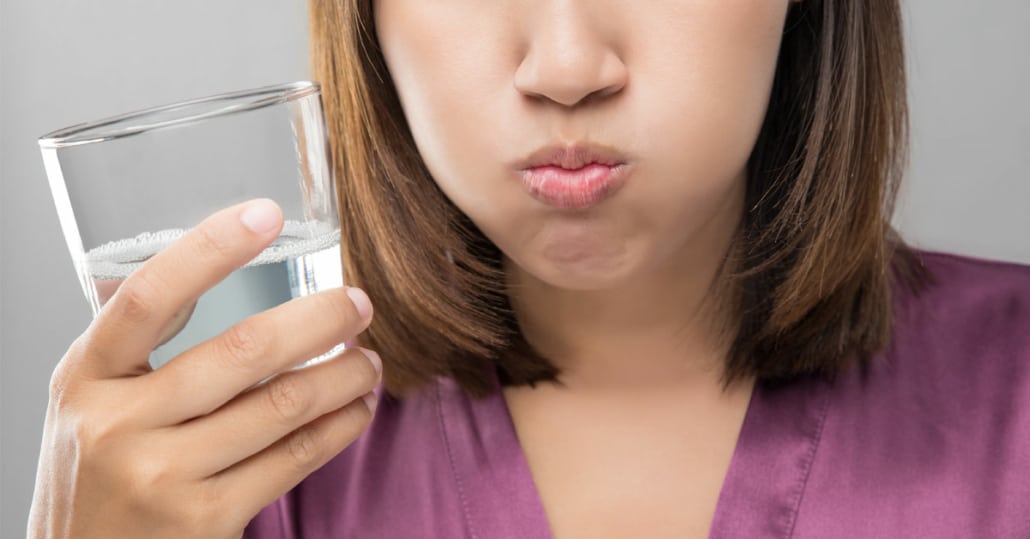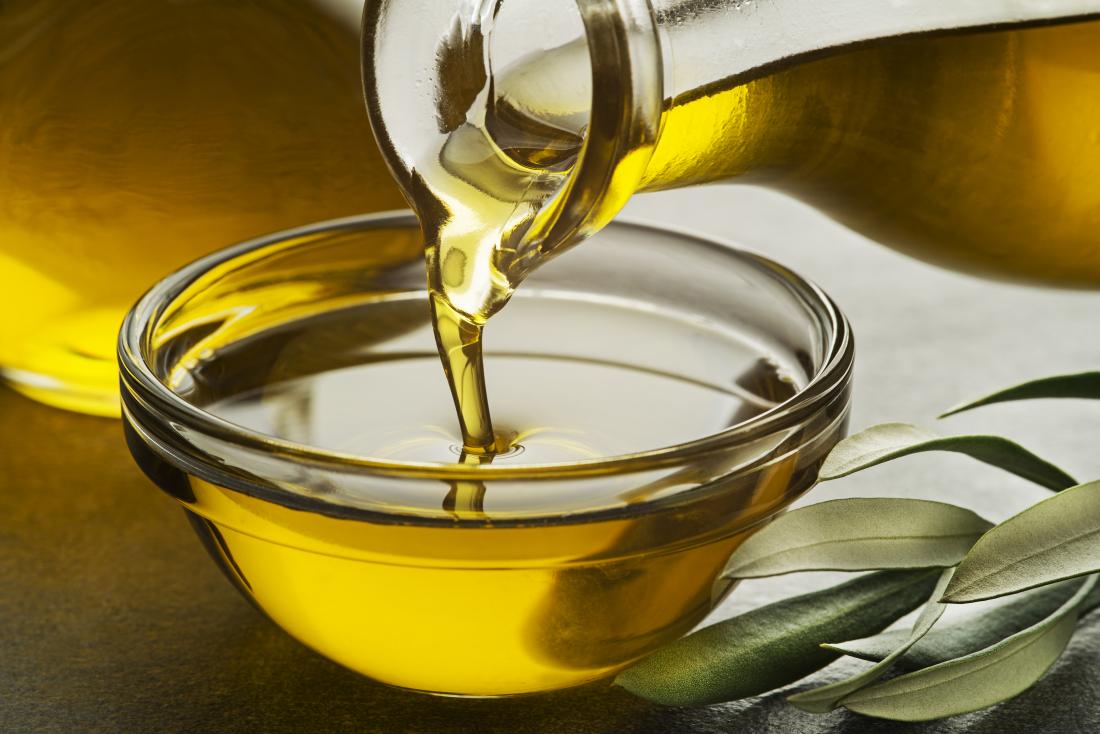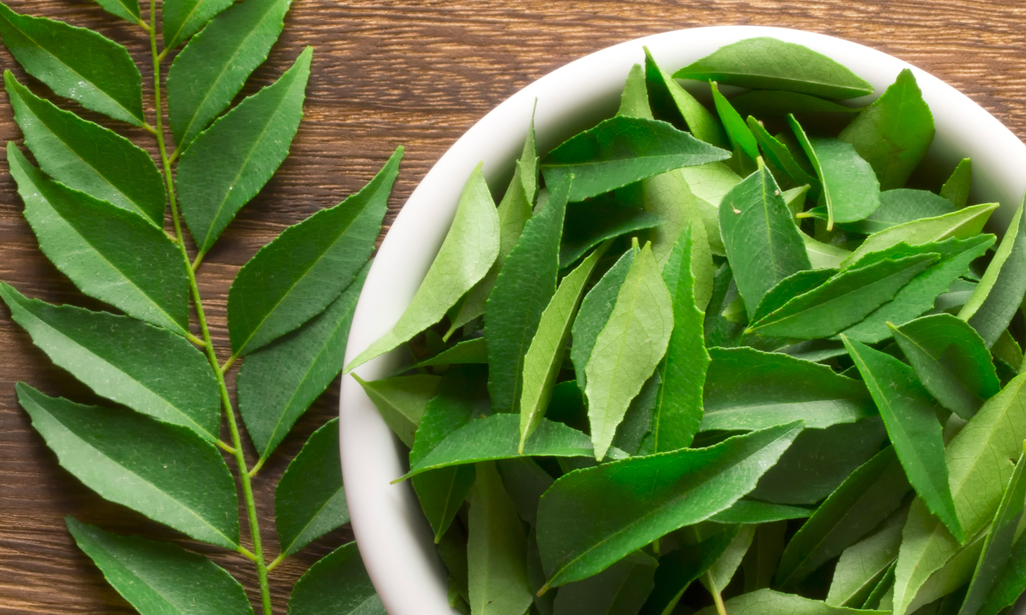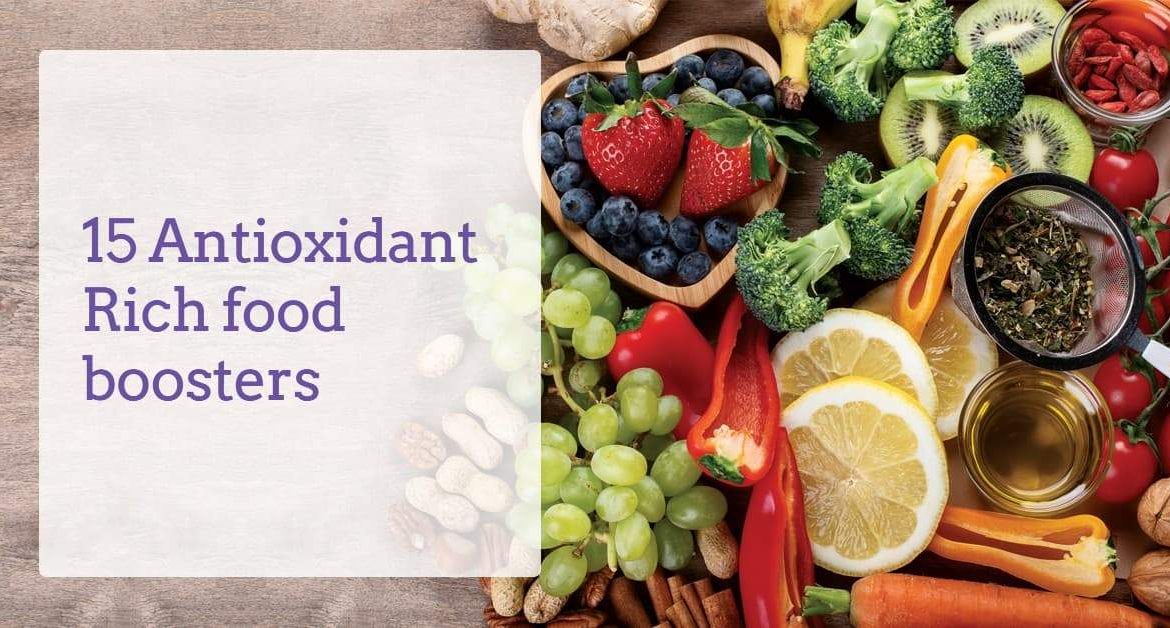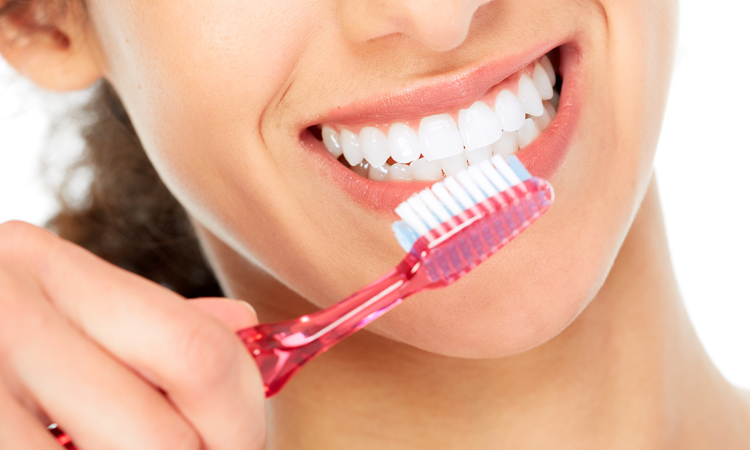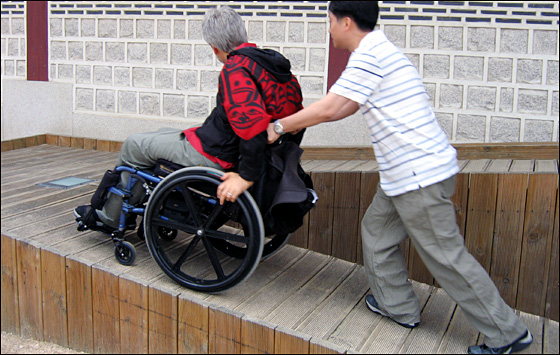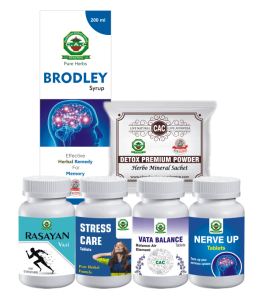Author Archives: admin
AYURVEDIC VIEW OF ASTHMA AND ROLE OF KAPHA IN ASTHAMA
- 20 Sep, 2021
- Posted by admin
- 0 Comment(s)
The features of Bronchial Asthma can be compared to Tamak shwasa explaindes in Ayurveda.
Shwasa is a major clinical condition according to Ayurveda and it has classes and subclasses. There are five types of Shwasa roga, Maha svasa Urdhava svasa chinna shwasa Tamak shwasa Kshudra shwasa. Among these five first three are incurabe, Tamak shwasa is difficult to cure but is controllable(Yapya roga). Kshudra shwasa is curable.
ETIOPATHOGENESIS OF ASTHMA
It originates at the site of Pitta(in the stomach) with simultaneous aggravation of Kapha and vata.
Kledak kapha accumulates and moves to the lungs. Kapha has properties like cold, slimy, unctuous, heavy and vata is cold dry rough and mobile in nature. These two intermix in lungs and and mucous present in the lungs becomes sticky, thick and it adheres to the walls of bronchi and narrows the bronchial tubes which leads to episodes of breathlessness or Asthma attack.
Charak Samhita says ” If vata predominantly associated with Kapha obstructs the circulation channels and moves in all directions in the body then this obstructed vata causes Shwasa.
Ashtang Hridyam has similar concept as Charaka. It says “Vata is obstructed in its movement by kapha and it spreads in all directions, vitiates the Pranavaha srotas(Channels of respiration), Udakvaha srotas(channels of water), Annavaha srotas(Channels of food), located in our chest and causes Shwasa, arising from stomach”
FACTORS AGGRAVATING KAPHA AND VATA
Environmental factors are listed but most of the factors involved are due to lifestyle and dietary habits that aggravates vata and kapha.
- Exposure to dust, smoke, wind(airborne pollens)
- Residing in cold places
- Exercise or walk beyond one’s own capacity
- Stress that may be induced by exercise
- Improper food combining and habitual eating of unhealthy food leading to Vitiated metabolism(causing Agnimandya and Ama)
- Constipation associated with flatulence
- Intake of food in deficient or excessive quantity
- Excess fasting or excess eating and agitated digestion resulting from it.
- Dryness in Respiratory tract(particularly lower) and upper GIT due to non unctuous food.
- Trauma to throat, chest and vital organs
SYMPTOMS
PRODROMAL :
- Pain in the heart region and flanks
- Upward movement of Prana (Respiration)
- Flatulence
- Splitting pain in the temples
VATAJ ASTHMA SYMPTOMS PRESENTATION
-
- Dryness, cough and wheezing
- Dry mouth and skin
- Thirst
- Constipation
- Anxiety
- Craving warm drinks
- Aggravation of the condition or episodes occur at dawn and dusk (Vata times)
PITTAJ ASTHMA SYMPTOM PRESENTATION
-
- Wheezing
- Coughing with yellow Phlegm
- Fever may be there
- Sweating and need for cold air
- Irritability
- Attacks occur during Pitta times, Noon and midnight
KAPHAJ ASTHMA SYMPTOMS PRESENTATION
-
- Wheezing and coughing with abundant white or clear phlegm(mucous)
- Instead of wheezing there will be a Railing sound produced by fluid in the lungs
- Attacks occur during Kapha times of the day, Morning and Evenings.
LINE OF TREATMENT OF ASTHAMA
Avoidance of triggering factors, improving quality of life with minimum medication is the aim of Astma management.
NIDAN PARIVARJAN(Avoidance of triggering factors) : Causative factor, Exposure to allergen or factor causing recurrent exacerbation should be avoided. For example
- Oily greasy fried food.
- Cold and refrigerated food and drinks
- Excessive physical exercise or other activities
- Smoking (Active and passive)
- Heavy foods like milk, cheese, banana
SHODHAN CHIKITSA : It is purification process which eliminates vitiated doshas from the body. It includes
- Snehan : Massaging body with Til oil mixed with saindhav lavan, specifically on chest and back region.
- Swedana
- Vaman
- Virechan(Purgation) : Ayurveda says “Tamke tu virechanam”. Virechana is best in Tamak shwasa(Bronchial Asthama). Kutaki(picrorhiza kurroa ) 1-3gm with honey in Asthma and Bronchitis is given twice daily for virechana.
- Dhumpana : Chandan, Guggulu, Haridradi, Lehsunadi dhumpana
SHAMAN CHIKITSA : People who are too weak to be given Shodhan therapy are given Shaman chikitsa. It includes internal medication that pacifies doshas, are Vatanuloak, ushna, have deepan pachan properties, Some ayurveda Shaman drugs and formulations are as follows
CAC Cough Go Tablets : It is a herbo mineral preparation and helps in balancing Kapha dosha. It shows effective results in all respiratory diseases along with seasonal allergies and bronchial asthma.
It has ingredients :
- Sonth (Zingiber officinale)
- Mulethi (Glycyrrhiza glabra)
- Pippali(Piper longum)
- Kali mirch(Piper nigrum)
- Abhrak bhasm
- Tankan bhasm
- Lakshmivilas rasa
These ingredients are Anti inflammatory, Anti oxidant, immuno modulator, Bronchodialator, Expectorant.
Other than Bronchial asthma it is useful in Chronic cough, whooping cough, common cold, Bronchitis.
DOSAGE : One tablet(650mg) twice a day with normal water.
SHWASKUTHAR RASA : It is an broncho dialator, expectorant, antioxidant.
Useful in cough, breathlessness, restlessness, chronic bronchitis, Indigestion.
DOSE : 125-250mg, once or twice daily, with honey or water
Few other formulations used in Asthma are : Sitopaladi churan, Talisadi churana, Kantakari avleha, vasa haritaki leha, vyoshadi vati, Dashmool kwath.
SINGLE DRUGS IN ASTHMA
- Powder of Talisa(Abies wabbiana) mixed with juice of leaves of VASA(Adhatoda vasica) should be used in cough caused by kapha and pitta
- Juice of Vasa leaves should be taken with honey in cough caused by Kapha and pitta and intrinsic haemorrhage
- In dry cough Vasa juice cooked Haridra (Curcuma longa) with fatty layer of milk
- Cold infusion(Phanta) of Vasa checks cough, fever and intrinsic haemorrhage
- Powder of Agaru(Aquilaria agalocha) mixed with honey is taken
- Shunthi(Zingiber officinale), Pippali(Piper longum), and Amalaki(Emblica officinalis) with honey
- Powdered seed of Timir(Eleusine aegyptiaca) and Karkatsringi(Pistacia integerria) mixed with ghee and honey
- Ghee cooked with double quantity of decoction of Sariva(Hemidesmus indicus)
- Decoction of Nirgundi, Guduchi, Haritaki, Marich in equal parts with salt
APATHYA
- Heavy foods like cheese, rice, sugar,lentils, curd, buttermilk, paneer
- Masha, Tila, Sarshap(Brassica niagra), beans, Tubers like Potato
- Buffalo milk and ghee
- Fruits like Guava, Banana, Watermelon, Papaya
PATHYA
- Garlic, Spinach, Brinjal, Grapes, Indian Gooseberry, Goat milk, Honey
- fruits like figs, dry grapes(raisins), pomegranate, fruits full of vitamin C such as oranges, strawberries, blueberries
- Maintain a gap of atleast 1hour between eating and sleeping.
YOGA AND PRANAYAMA
These yoga asanas can relieve asthma symptoms by opening chest muscles
- Bridge pose
- Cobra pose
- Seated spinal twist
Breathing exercises relives stress and helps with the shortness of breath in asthma
- Alternate nostril breathing
- Victorious breathing or Ujjayi Pranayaa.
FULLER’S EARTH FACE PACK
- 20 Sep, 2021
- Posted by admin
- 0 Comment(s)
Fullers earth face pack is a naturally made face pack. It deep cleanses skin, removes blackheads, white heads and reduces pore size. Multani mitti’s astringent property helps reduce Acne. It absorbs excess oil in the affected area. It soothes sunburns, reduces freckles, increases blood circulation.
INGREDIENTS
- Fuller’s earth (Calcium bentonite)
- Aqua
- Kaolin
- Bee wax
- Activated charcoal
- Sandalwood powder
- Essential oils
Properties of ingredients
Fuller’s earth : Fuller’s earth consists chiefly of hydrated aluminum silicates that contain metal ions such as magnesium, sodium, and calcium within their structure.
Montmorillonite is the man clay mineral in fuller’s earth, but other minerals such as kaolinite, attapulgite, and palygorskite are also present in fuller’s earth. Although it is similar in appearance to clay, fuller’s earth is different because its more fine-grained and it has a higher water content.
It is known for it’s ability to absorb oil and other impurities, so it acts as a good cleanser for people with oily skin. It enhances complexion, increases skin tone and softens the skin.
If used as a scrub, multani mitti can remove dead skin cells and remove blackheads and whiteheads and giving skin a natural and healthy glow.
It is effective in treating skin rashes and infections.
Kaolin Clay : Kaolin clay is considered to be one of the gentlest facial clays. It has kaolinite, a mineral that consists of layered silicate. Kaolin clay is suitable for almost all types of skin, especially sensitive skin. Few of it’s properties :
- Absorbs extra oil
- Natural cleansers
- Exfoliates skin
- Soothes skin
- Evens out skin tone
Bee Wax : Beeswax is a natural substance produced and secreted by honey bees. It is hard and breakable when it’s cold but soft and pliable when heated. It is anti inflammatory and anti bacterial so it helps fight conditions like acne, eczema.
It has many healing properties. Its anti inflammatory property encourages healing of wounds. It helps form a protective layer between skin and environment without clogging the pores.
It has high vitamin A content so it helps in reconstructing cell structure and overall skin health.
If its combined with other ingredients like vitamin E it is a good cure for stretch marks.
Activated Charcoal : Dirt, impurities, heavy metals, chemicals and poisonous substances are attracted to activated charcoal. Charcoal removes these toxins from skin without absorbing vitamins and nutrients from the skin. Leaves the skin smooth and supple.
It can help with itching or swelling from insect bites by removing or taking out the sting. It neutralises venom in insect bites.
Sandalwood Powder : Chandan (Santalum album) has natural anti microbial, antiscabetic, hydrating properties. It works as a cleanser for all skin types. Balances Tridoshas. Few of its properties :
- It removes skin tan
- Acts as astringent : It coagulates skin proteins and prevents breakouts, allergies and abrasions. It tightens skin pores by slightly contracting the soft tissues in skin.
- Used as Antiseptic : Chandana mixed with milk if applied to acne, sores, pimples can really help with the situation
- Removes dark spots
- Softens skin
- Lightens blemishes
Directions of use
Mix the required amount of Fuller’s earth face pack with rose water. Add rose water according to the consistency. Apply the paste all over your face and neck, avoiding the area around eyes. Leave it for about 20 mins or until it dries properly. Wash it off with lukewarm water.
Repeat it twice a week for good results.
DIABETES (MADHUMEHA) AND ITS AYURVEDIC MANAGEMENT
- 20 Sep, 2021
- Posted by admin
- 0 Comment(s)
In Ayurveda Diabetes can be compared to Madhumeha, one of the types of Vataj Prameh because of the similarities in etiopathogenesis, clinical features and prognosis.
Main causes of Madhumeha are lack of exercise, improper food habits, eating food which has properties like snigdha and guru in large amounts which vitiates Kapha dosha, the primal cause of Madhumeha disease.
To prevent the complication of the disease it is mandatory to follow Ayurveda principles like Nidan parivarjan, Asht ahar vidhivishesh ayatana, Dincharya, Ritucharya, Sadavritta and practicing Yoga and pranayama.
Ayurveda describes about 20 types of Pramehas, If not treated on time they can convert into Madhumeha and become incurable.
CAUSES
- Inactivity or sedentary lifestyle
- Excessive sleep
- Excessive use of yoghurt
- Consumption of sweet food in large amounts
- Meat soup of domestic, aquatic, marshy animals
- Psychological factors like worry, grief, anger, anxiety etc.
- All kapha aggravating food items
CLASSIFICATION
- Doshika classification
- Kaphaj 10 : Prediabetes and early stage of Type 2 DM
- Pittaj 6 : Acute stage of type 2 DM
- Vataj 4 : Advanced stage of type 2 DM, genetic/hereditary DM
- Aetiological classification
- Sahaj(Hereditary, Patients of Type 1 DM)
- Apathyanimmitaj(Acquired, Prediabetes and patients of Type 2 DM)
- Constitutional
- Sthula (Associated with obesity) : Prediabetes and DM with or without insulin resistance
- Krisha pramehi (Associated with weight loss, malnutrition or type 1 DM)
- Prognostic
- Sadhya (Curable, Kaphaj type)
- Yapya (Palliative, Pittaj type)
- Asadhya (Incurable, Vataj type)
SYMPTOMS
- Increased frequency of urine
- Increased appetite
- Excessive thirst
- Turbid urine
- Tiredness
- Weight loss
- Visual disturbances
- In elderly patients symptoms like anorexia, loss of motivation,failure to thrive and urinary incontinence
Diabetes tends to affect all dhatus of the body causing different symptoms
Rasa dhatu (plasma): hyperglycaemia
Rakta Dhatu (blood): Deteriorated quality of the blood cells with increased viscosity
Mamsa dhatu (muscles): muscle wasting, necrosis
Medhas dhatu (fat): hypertrophy of adipose tissue(Obesity)
Asthi Dhatu (bone): De-mineralization of bone tissue, reduced density
Majja Dhatu (nervous tissue): Degeneration of brain tissue
Shukra Dhatu : (reproductive tissue): loss of libido, transmission to next generation
Sira Dhatu (arteries): atherosclerosis
Tvak (skin): necrosis, ulcers, carbuncles
Snayu (nerves): neuropathies
COMPLICATIONS
- Boils and carbuncles
- General debility
- Gangrene
- Retinopathy
- Cardiovascular disease
- Renal damage
AYURVEDA MANAGEMENT OF MADHUMEHA
- Abstinence from causative factors(Nidan parivarjan)
Lifestyle modification can reverse Prediabetes and check in further progression of type 2 DM.
Nidana that should be avoided :
- Any type of fermented material
- Excessive water intake
- High calorie diet
- Milk, oil, ghee
- Sugarcane and its products
- Newly cultivated grains
- Rice, potato, maida, deep fried food, red meat
- Soups and meat of aquatic animals
- Sedentary lifestyle
- Lack of exercise or physical activity
- Excess sleeping
Diet and lifestyle (DO,S)
- Yava is considered as the best diet of Pramehi.
- Shali and shashtik chawal(old rice)
- Pulses like Chana, Adhaki, Mudga, and kulatha are advised
- Diet should be taken keeping the agni(Digestive fire) in mind
- Fresh vegetables, fruits like methika, jamun, Apple, pear, orange
- Bitter and astringent food, bitter gourd
- Protein rich diet like, chickpeas, moong, masoor, lentils, soyabean
- Regular exercise : Brisk walking, swimming, biking, low impact aerobics
Mental Relaxation : Meditative asanas like Shavasana, sidhasana, Padasana, Vajrasana are good for mental relaxation.
Pranayamas like Brahmri pranayama, alternate breathing helps cal down the mind, reduces stress and anxiety.
Yoga Asanas for madhumeha ; Asanas increase peripheral utilization of glucose by improving insulin sensitivity at target level. Some of the asanas are
- Mayr asana (Peacock pose)
- Bhujang asana (Cobra pose)
- Gomukhasana(Cow face pose)
- Halasana (Plow pose)
- Pashchimottanasana ( Seated forward bend)
AUSHADHI
Pharmacological approach is only advised to those in which lifestyle modification fails or is not sustainable and great high risk of developing type 2 DM
A lot of bitter astringent, pungent property herbal and herbo mineral drugs are used in Prameh patients like Nisha, Amalaki, Nimba, pippali
- Promotion of Agni Status( Metabolism promotion) : Drugs having deepan pachan properties such as Shunthi, pippali, marich, chitrak
- Promotion of ojas status (Promoting immune system) : Drugs like Nisha, Amalaki, Guduchi, Shilajeet.
Few formulation and herbs used in Madhumeh are :
- Vasant kusumakar rasa
- Triphala churan
- Trivang bhasm
- Nimbpatra svaras
- Guduchi swaras
- Aloe vera and aloe barbadensis : Leaf extract of aloe vera
URINARY TRACK INFECTION AYURVEDIC AND NATURAL TREATMENT
- 18 Sep, 2021
- Posted by admin
- 0 Comment(s)
INTRODUCTION
It is an infection of urinary system which occur any party of urinary system (kidney, ureter, bladder urethra). Mostly involve lower urinary system (bladder, urethra).When it affects upper urinary track it is known as kidney infection an when it affects lower urinary track it is known bladder infection.
SYMPTOMS
- Frequent urination.
- Urination with pain.
- Feeling lethargy.
- Fever and chills
- Pressure in lower abdomen.
- Burning sensation during urination.
AYURVEDIC KIT FOR UTI
HOME REMIDIES FOR URINARY TRACK INFECTION
- DRINK PLENTY OF WATER: – It helps to flush the bacteria through urination and prevent infection.
- VITAMIN C INTAKE: – Increasing the acidity of urine and help to killing the bacteria causing infection. That means increase intake of vitamin c decrease risk of urinary tract infection.
- TAKE PROBIOTICS: – It is a beneficial microorganism, consumed through food which helps to promote the health of bacteria in live in gut and also enhance the immune function.
- APPLY HEAT: – UTI cause pain in the pelvic region. Applying a heat pad to the bladder or pubic area can help to relieve pain and discomfort temporarily.
- CLOTHING: – wearing loose and cotton cloth can prevent moisture from pelvic area. And stop the infection from getting worse.
- URINATE WHEN NEEDS ARRIES: – Frequent urination create pressure on bacteria in the urinary track and help to flush out the track.
- CRANBERRY JUICE: – It contains antioxidants including polyphenols which have antibacterial and anti-inflammatory properties.
- WIPE CORRECTLY: – After urination wiping the area from front to back help to restrict the entry of bacteria to the urethra. Stay clean and dry help to prevent UTIs.
- CHANGE TAMPONS, MENSTRUL PADS AND CUPS FREQUQNTLY: – Using tampons increase the risk of bacteria to grow faster. Low absorbency pads expose your vulva to infect easily. UTIs getting worsening if the position of tampons and cups not correct.
- EAT GARLIC: – Consumption of garlic in your diet boost your immunity and help to fight the infection. Antibacterial and antimicrobial properties of garlic help to kill the bacteria.
Benefits of Mouthwash
- 18 Sep, 2021
- Posted by admin
- 0 Comment(s)
Mouthwash is beneficial for your mouth.
Oral hygiene is necessary to keep the mouth healthy. To keep the mouth healthy, brushing is necessary. Along with brushing, when you use the mouthwash, it helps to keep the gums healthy with the teeth. Excessive use of mouthwash can be harmful for you. Because it contains some things that can harm you. Mouthwash is beneficial, but do not use it in place of anything. By the way, mouthwash is used to relieve bad breath and many times you are advised to use mouthwash to get rid of gums problem.
Benefits of Mouthwash
- To remove cavity
- To overcome the problem of gums
- To remove bad breath
- Prevention of mouth ulcers
Cavity removal: Mouthwashes help to remove cavities. Gargling with mouthwash does not keep bacteria in the mouth and does not cause pain in the teeth. If you have fluoride in your mouthwash, it is beneficial for you. Using mouthwash containing fluoride prevents your teeth from cavity.
To overcome the problem of gums: Mouthwashes help to keep your gums healthy. Some bacteria remain hidden in the gums even after brushing, due to which the problem of gums and swelling occurs. These bacteria hidden in the gums help in removing the mouthwash.
Removing Bad Breath: Most people use mouthwash to help relieve bad breath. It removes the bad smell of the breath by destroying the odor-causing bacteria in the mouth.
Mouth ulcer prevention: Mouthwash prevents ulcers along with relieving pain caused by mouth ulcers. When you use non-alcoholic mouthwash, it removes the ulcer and its pain as soon as possible.
Use of mouthwash is beneficial for your mouth. Many things present in mouthwash help to keep your mouth healthy.
There are many of us who use liquid mouth freshener after regularly brushing teeth for oral cleansing and care. But you will be surprised to know that using more mouth freshener can prove to be dangerous for health. Like most toothpastes, some mouthwashes use sodium lauryl sulfate to clean teeth and eliminate bad odor in the mouthwash. The excessive use of which reduces the production of nitric oxide in the mouth and it worsens the metabolism of the body, which increases the risk of serious illness like diabetes to a great extent. Increased risk of diabetes A report has claimed that people who use mouthwash at least 2 times a day have a 55% increased risk of diabetes compared to others. Research has proved that mouthwash or any chewing gum is not required in 80 percent of cases.
The main reason for bad odor is bacteria which is present in your tongue and it is very important to clean it daily. Apart from this, food particles remain in the middle of the teeth, which can be removed only by brushing them. There is no specific benefit to using mouthwash for this. The damage caused by mouthwash makes the mouth dry. Mouthwash can cause dry mouth. Using mouthwash containing excessive amounts of alcohol makes your mouth dry. Due to which there may be a problem of bad breath with cavity. Mouthwash problem Mouthwash has antibacterial properties with a high amount of alcohol that can cause tissue pain inside the mouth. Therefore alcohol-based mouthwash should not be used. It can also cause blisters in the mouth. Oral Health Problems Using mouthwash does not make you aware of many oral problems. When you use mouthwash every day, it hides the problem of bad breath, due to which you are not able to get it treated.
Best Cooking Oils for Your Health, Benefits, Uses
- 18 Sep, 2021
- Posted by admin
- 0 Comment(s)
Oil is used a lot in cooking. Without oil, you cannot taste food. You must have often heard that ‘oil should be used in small amounts’, ‘too much oil is harmful for health’. That is why you use non stick utensils to cook less oil for cooking. But perhaps you do not know that using proper amount of oil is also beneficial for you. Using the required amount of oil is good for the heart. But you also have to keep in mind that which oil is beneficial for you to use. Therefore, we will tell you which oil you can increase the taste of the food by using it. So let us tell you about the 10 best oils.
10 Best Cooking Oils:
1. Grape seed oil
Use of oil made from grape seeds is quite beneficial. Because in this, due to polyunsaturated fat, you are protected from many diseases. The use of grapefruit oil in food reduces eye irritation, as well as can help protect you from diseases of the eyes and skin.
2. Benefits of sesame oil
Sesame oil is delicious to eat. Sesame oil provides the ability to fight many diseases, oil of oil is tasty. Sesame oil provides the ability to fight many diseases. Sesame oil is very beneficial for diabetes patients. With sesame oil, you can avoid many diseases like anemia, cancer, stress and sugar etc.
3. Avocado Oil
Avocado oil is found in plenty of vitamins. This oil is mostly used for medicine and food. Avocado oil is extracted from the avocado fruit. Avocado fruit is cultivated abroad. Due to the presence of vitamins and antioxidants in this oil, it works to remove skin diseases. Use of this oil can provide relief from obesity, arthritis and inflammation.
4. Rice Bran Oil
Oil made from rice bran is considered very beneficial for health. Oil made from rice bran is considered very beneficial for health. Vitamin E, acid and antioxidants are found in this oil, which keeps cholesterol balanced. This oil is used in cooking. Most oil made from rice bran is used in Japan and China.
5. Olive Oil
Many diseases can be avoided by using olive oil. Many diseases can be avoided by using olive oil. It is beneficial for people with high BP, as it is beneficial in reducing the sugar label. Olive oil is very beneficial for health. Olive oil is also used for massaging young children. Olive oil works to control depression, cancer, diabetes.
6. Sunflower Oil
Vitamin E is found in plenty in sunflower oil. It burns fat, keeps the heart healthy. Vitamin E is found in plenty in sunflower oil. It burns fat, keeps the heart healthy. Reduces cholesterol level and also works to increase taste in food.
7. Coconut Oil
Best Cooking Oils: Coconut oil is also used for cooking as well as for health. Coconut oil is used for cooking as well as for health. Cereal oil is also used for cooking as well as for health. Coconut oil is also considered to be good for the digestive system.
8. Groundnut Oil
Eating peanuts is considered good for health; eating peanuts is considered good for health, just as peanut oil is also beneficial for health. The body gets energy due to the rich amount of vitamins and minerals in peanuts. Peanut oil can be beneficial for heart, skin and cancer.
9. Mustard Oil
Mustard oil is also known as bitter oil. Most Indian people use mustard oil for cooking. Mustard oil is considered a very nutritious oil. Mustard oil is hot. Therefore, this oil is used more in winter. Mustard oil can also help in protecting the body from allergies.
10. Extra Virgin Olive Oil
Best Cooking Oils: Extra virgin olive oil is better than olive oil (olive oil). Extra virgin olive oil is better than olive oil (olive oil). It is the purest and healthiest. This oil is made from freshly cut olive oil. Which is good for health. The use of this oil keeps the digestion process right.
11. Flaxseed oil
Flaxseed oil is also considered to be another good cooking oil as it is loaded with the properties of omega 3 fatty acids. Omega 3 fatty acids are extremely beneficial for our health and are also very important in treating and preventing Crohn’s Disease and colitis.
12. Best cooking oil for health groundnut oil
Peanut oil has high amounts of mono-unsaturated (MUFA) and polyunsaturated (PUFA), which helps lower low-density lipoprotein (LDL) cholesterol. It is also a good source of vitamin E, which protects the skin from acne or scars and is known to act as a good antioxidant.
13. Palm oil
Palm oil is mostly used for frying food, palm oil is considered a rich source of antioxidants, carotene and vitamin E. It is also a good treatment for cancer patients and those suffering from Alzheimer’s, arthritis, atherosclerosis and anti-aging.
The best edible oil is almond oil
Almond oil for cooking is used for two first aid issues, heart disease and blood pressure. Almond oil increases the level of good cholesterol and also protects against colon tumor.
BENEFITS OF TEJAPATTA, MINT AND CURRY LEAVES IN DIFFERENT DISEASES
- 18 Sep, 2021
- Posted by admin
- 0 Comment(s)
Tejapatta is commonly used in Indian cuisine for its aroma. People feel that this smells good in vegetables but this leaf also has many health benefits. Tejapat oil has a variety of medicinal properties that are very beneficial for health. Many types of ointments are made from this oil and it has anti-bacterial and anti-fungal properties. It is also rich in antioxidants. Tejpatta is a type of spice that has high amounts of copper, potassium, calcium, magnesium, selenium, and iron. But very few of us know about its properties.
In this article, we are going to tell you about 7 health benefits of Tejpatta, which are as follows:
1) Help in digestion: Tejpatta is helpful in digestion. And many types of digestive disorders are cured by its use. If you have constipation, acid and cramps, then Tejapatta can prove to be a panacea for you.
2) Beneficial in Diabetes: In case of type 2 diabetes, Tejpata can prove to be good for you. It controls blood sugar and keeps the heart healthy. Therefore, if you are a victim of diabetes, then Tejpatta is used in food.
3) Inspire sleep: On getting more sleep, soak Tejpatta in water for at least 6 hours and after getting up, drink that water. This will give you a lot of relief and a sleep-over hangover.
4) Remove kidney problem: Tejpata is helpful in resolving the problem of kidney. For this, boil water by adding bay leaf and drink that water. Make your ceiling the most beautiful part of your home.
5) Anti-cancer element: Tejpata has properties to fight cancer. It contains elements called caffeic acid, quercetin, and euginale that prevent metabolisms from causing fatal diseases such as cancer.
6) Pain relief: Applying the oil of Tejpatta to the painful area provides relief from pain. If you want, massage it at the painful place, it will help you a lot.
7) Cardiovascular benefits: Acne is beneficial in many heart related problems. Consumption of it reduces the risk of heart attack and keeps the heart healthy.
These Are Excellent Benefits Of Consuming Mint
- Benefits for Asthma patients: In the mint, such qualities are found which can be beneficial in asthma. Consuming mint leaves with figs can relieve chest phlegm. For this, you can chew some mint leaves with figs. Drinking mint juice can also relieve respiratory problems.
- Relief from stomach diseases: Our diet is more prone to stomach problems like acidity, constipation, in this case, peppermint can be beneficial for you. Peppermint can also be very beneficial in relieving stomach irritation or flatulence. For this, mixed mint juice in a cup of lukewarm water and a spoonful of honey in it should be drunk.
- Jaundice is effective even if you have jaundice, you can consume mint. With this, you can get mint relief even if the liver is swollen. Mint has many properties that can relieve jaundice.
- The use of peppermint saved from heat in summer is considered to be the best in summer. In summer, mint is also helpful in protecting from heat. Drinking mint juice daily in summer makes you feel cool as well as keeps you hydrated.
Be careful while consuming mint. Mint is very healthy, but excessive consumption can be a danger bell for you. Mint leaves should be consumed in limited quantities. Excess intake can be harmful to the kidneys and intestines.
Curry leaves
Curry leaves are used in almost every Indian kitchen to sprinkle food. It increases both the taste and smell of food. The nutrients present in curry leaves are beneficial for health in many respects. In Ayurveda, curry leaves have been described as a panacea for stomach diseases. Apart from this, it keeps the weight under control by keeping the sugar under control. It is also considered good for skin and hair. Eating curry leaves with lukewarm water every day on an empty stomach has many benefits. Let’s know how curry leaves benefit you. Keep the digestive system right – curry leaves have carminative properties. Which keeps away problems like constipation. It also provides a lot of relief in stomach problems.
Curry leaf acts as an anti-bacterial, due to which all stomach problems are removed.
Relief in skin infection Curry leaves have anti-oxidant, anti-bacterial and anti-fungal properties. Which protect the skin from many types of infections. Brighten the eyesight, Vitamin A is found in it, which is very important for our eyes. Due to lack of it, night blindness occurs due to which the eyesight also reduces. Consumption of curry leaves on an empty stomach makes the eyes light up.
Get rid of diarrhea. Due to the cargo hold present in the curry leaves, it has antibacterial and inflammation-reducing properties. The hard leaf serves to correct diarrhea by removing bile related to the stomach and grinding the curry leaves for its consumption. The juice has to be taken two to three times a day with buttermilk, so that you will soon get relief in your diarrhea,
The nutrients in curry leaves do not allow the hair to turn white quickly and also reduce hair fall. It is also effective in problems like dandruff.
Eating curry leaves on an empty stomach, which helps in losing weight, reduces weight. For that, boil 10 to 20 curry leaves in water. Now let this decoction cool down. After this, mix lemon and honey in it and drink it. Now drink it on an empty stomach every day, this drink will burn the fat in your stomach.
Prevent cancer disease – Curry leaves contain plenty of antioxidants, which protects us from diseases like cancer. And curry leaves protect against leukemia, prostate cancer and colorectal etc. due to special elements like phenols. The presence of many types of vitamins in it also prevents the loss of oxidative and free radicals.
Antioxidant Rich Food
- 18 Sep, 2021
- Posted by admin
- 0 Comment(s)
Antioxidant is a molecule that stops the oxidation process. Oxidation is a chain reaction that occurs in cells that eventually leads to damage to the cells. Our body is made up of cells, any cell damage has a bad effect on the health of the whole body. But antioxidant-rich foods help to end the process of oxidation, which can keep cells healthy. This slide show lists some such antioxidant-rich foods.
Lemon
Lemon belongs to the citrus family. in this yellow fruit Vitamin C present which is a powerful source of antioxidants. Lemon is a rich source of antioxidants. The antioxidant found in lemon is very beneficial for your, hair, health and skin.
Strawberry
The antioxidant element found in vitamin C-rich strawberries increases immunity by eliminating free radicals that harm the body. Regular consumption of one bowl of strawberries protects against many diseases. There is no store of vitamin C in the body, so vitamin C should be consumed daily.
The nuts
Nuts are a rich source of vitamin E and are the best source of dietary supplements for your body. Vitamin E, unlike vitamin C, can be stored in the body along with fat in the liver. Almonds, walnuts, pistachios, etc. can be consumed in nuts. According to one study, those who eat nuts live two years longer than those who eat nuts.
Brokley
Each plant is rich in vitamin C, due to which it is considered the best source of antioxidants. Apart from vitamin C, broccoli also contains selenium. Salinium helps fight the loss of cells of the human body. It can be eaten in salads or raw, its vegetables can be made, or it can also be eaten by boiling. Broccoli is also baked and eaten in some dishes.
Egg
Egg is the most common diet preferred worldwide. Doctors also recommend to eat one egg every day. The vitamin E present in it is necessary to end the oxidation process.
Fish
The high amount of selenium and chemical is found in fish, it helps in protecting the body cells from being damaged in any way. Like fish, different types of fish can also be consumed to maintain sufficient amount of antioxidants in the body.
Brown rice
However, you don’t like this brown taste any more. But it has many qualities. Brown rice has a very low calorie content and is gluten free. In addition, a powerful antioxidant called polyphenol in brown rice helps prevent the oxidation process.
Beans
Beans are nothing but seeds of a plant. In which there is an anti-oxidant called cysteine which helps in removing free radicals from the body. Also, beans are a good source of nutrients necessary for human health due to being free from fat.
Watermelon
Watermelon popularly known fruit is also an important source of antioxidants. Melon being a rich source of glutathione protects cells from toxins. Apart from this, it is also a very good source of vitamin C. It has antioxidant properties.
Red wine
Red wine prepared from dark colored grapes contains a high amount of antioxidants called polyphenols. Due to this, it helps in combating the oxidation process in the human body.
Antioxidant Food
For a healthy diet and overall health – we should include these top 5 antioxidant food
1. Vegetables
Broccoli and kala are considered as super foods that fight diseases.
However, the Indian market supplies equally effective antioxidant alternatives in the form of spinach, lettuce, cauliflower and cauliflower enriched with minerals and vitamins in antioxidants such as lutein, quercetin.
Antioxidant vegetables in India include: tubers are sweet potatoes or sharkcand, onions and garlic are other rich sources of antioxidants. Orange vegetables such as carrots are rich in vitamin A and phytochemical and can be eaten raw, with salads or eaten as a main dish.
2. Fruit
Grapes, especially dark grapes, loaded with antioxidants such as phytochemicals (flavonoids) such as proethocyanidins and anthocyanidins, are loaded with selenium and vitamin C, aiding in the protection from heart disease and cancer. Apple or apple, another major antioxidant food in India – is rich in fruits, vitamins and quercetin.
Bananas are easy-to-eat fruits packed with vitamins B6 and C, potassium, and manganese, and can be enjoyed, sprinkled with chulet, or mixed in chicken
3. Indian Spices
An Indian meal is not possible without the addition of spices. The good news is that many of them also provide antioxidant benefits, turmeric, a common food flavoring and coloring agent, an ingredient called curcumin, which has been proven to interfere with the growth and spread of cancer.
Other spices rich in antioxidant foods include ginger, cinnamon, mustard seed, chili and black pepper in India.
4. Tea
In addition to flavor, antioxidant foods in tea leaves are a boon for tea lovers in India, who can enjoy supplements of anthocyanin and proanthocyanin, helping the body with inflammation, quercetin and catines. Can be followed by cancer, which can result in blocked cell damage.
5. Add Beans and Pour
Black beans, red beans, pinto beans, soy beans – this food group is packed with the goodness of flavonoids, folates, vitamins, and minerals. Lentils such as moong bean are rich in vitamin B1 and magnesium. This is another item that should be included in your antioxidant foods India.
It is easy to promote a daily diet with antioxidant food in Indian foodstuffs, along with everyday foods found in Indian homes and markets!
ORAL HYGIENE TIPS AND TRICKS
- 17 Sep, 2021
- Posted by admin
- 0 Comment(s)
Daily health and hygiene regimen according to Ayurveda is referred to as dincharya or ‘daily practice’. This is a regular regimen to keep an individual’s mind and body in optimum health and wellness. Everyone’s regular health and hygiene regimen will be different depending on age, gender, environmental factor, state of health, body type, and seasonal factors. Daily health regimens or Nitya karama have different components like showering/bathing, Dantdhawan, Nasyam, Asana, Meditation, and Pranayama, Dhoompan etc., and most important among these components is one’s daily oral hygiene practice, which includes maintaining optimal health of your teeth, gums, and tongue. We will outline a typical Ayurvedic dental care regimen that can be adjusted depending on personal need and circumstances.
Morning
Before the day starts, early morning is considered the most important time to care for your oral hygiene. As bacteria and plaque tend to accumulate (increase in number) in your mouth overnight and cause offensive “morning breath”, it is important to notice and address this first thing in the morning on an empty stomach. Thus the mouth will be free of bacteria, clean, the breath fresh, and the sense of taste living for the day.
Oil pulling (Kavala Graha)
The initial step of the morning ritual is oil pulling (Kavala Graha), an ancient Ayurvedic ritual in which a tablespoon of oil(commonly preferred oil is sesame oil) is used to “pull out” impurities and bacteria (known as ama in Ayurveda)from the mouth. Swishing oil around the mouth and between the teeth(without swallowing) for five to twenty minutes and then spitting out is known as kavalgraha. The mouth can be rinsed gently with hot water after that, and then the person can further proceed to brush of teeth. Swishing with the oil can be done at the same time as taking showering to save time.
Brushing your teeth
Ayurvedic physicians in ancient times recommended brushing teeth with twigs made from medicinal trees like Neem, Kikar, Jamun, etc, in the present era it is best to brush teeth with an appropriate toothbrush with soft bristles and a specially formulated ayurvedic Manjan or Paste. It will help in removing accumulated bacteria, tartar, a plaque from the enamel surface of teeth. The ingredients of the toothpaste have medicinal properties which will help to keep the gums healthy and to freshen the breath.
Scraping of the tongue (jihvasodhana)
After brushing your teeth, the next practice in the morning ritual should be scraping the tongue with a tongue scraper. Tongue scraping is an ancient ayurvedic ritual (jihvanirlekhan) that cleanses the tongue and keeps it free from germs and helps in combating foul breath. It helps in stimulating the taste buds before breakfast.
Swishing with mouthwash
The last step in your morning oral hygiene ritual must be to swish your mouth with an Ayurvedic mouth wash or herbal decoction, which will ensure removing leftover germs on all the places in the oral cavity left by brushing and scraping, like under the floor of the tongue or on the roof of the mouth.
Day
During the day it can be beneficial to invest a few minutes caring for your oral cavity after meals. A toothpick can help to remove any large food particles. Followed by a quick swish of ayurvedic mouthwash, this can be entire that’s required to keep the mouth clean, germ-free and the breath fresh throughout the day.
Evening
After your dinner and before going to the bed is the final main step of the day for investing few minutes for your teeth and gums care. This will ensure that any stuck food particles are removed from the teeth, dental plaque, tartar, and bacteria do not accumulate overnight while sleeping overnight.
Brushing your teeth
According to allopathic and ayurvedic experts, it is advised to brush the teeth two times a day, both during morning and night. Twice daily brushing of the teeth has been the recommended practice for many centuries and is even mentioned in the ancient Ayurvedic text Charak Samhita.
Flossing between your teeth
Flossing across the teeth is a very effective practice at removing stuck food particles and reducing the formation of plaque and removing the tartar. It should be done at least once a day and it is generally advised to floss before going to bed rather than in the morning, as this ensures that any solid food particle does not stick in the teeth overnight.
Swishing with mouthwash
In the end, another swish with herbal kashayam (mouthwash) will give the final cleansing to your mouth before going to bed and it will keep your breath free from odor throughout the night. Caring for your teeth, tongue, and gums with this daily Ayurvedic regimen will ensure optimal oral hygiene and contribute much more to your overall health.
How to read your tongue
According to Ayurveda, different parts of the tongue related to different organs of the body. Ayurvedic physicians examine their patient’s tongue which helps to diagnose disease. The front 1/3 of the tongue relates to the neck, lungs, heart, chest; the central 3rd relates to the pancreas, stomach, liver, and spleen; and the rear one-third area relates to the lower abdominal organs, like the ileum, duodenum, and colon. Discoloration, patches, depressions, or elevations on tongue areas signify all sorts of physical, and metabolic imbalances. If your teeth have left impressions along the margin of your tongue, you may be experiencing poor intestinal absorption. A white coating that covers your entire tongue indicates toxins in the intestines. A line down the middle of the tongue reflects that you’re retaining emotions along your vertebral column, which can lead to stiffening of the back. So the tongue elaborates the tale of the body and the mind.
Remedies for tooth and gum problems
FOR RECEDING GUMS AND SENSITIVE TEETH:
Moisten a toothbrush with water and Put a few drops of tea tree oil on the brush. Brush your teeth. After that with the help of a cotton swab apply some tea tree oil to the exposed part of the gums. Applying tea tree oil to your dental floss can treat deep pockets of infection.
FOR A TOOTHACHE:
Place a small piece of edible camphor (not the synthetic kind) next to the painful tooth can also use a clove instead of camphor. The saliva will mix with the camphor and will relieve the toothache. If you have a cavity then visit your doctor.
FOR COLD SORES:
Applying aloe vera gel or pulp directly onto the affected area can be beneficial. At night, take one-third tablespoon of Triphala powder (a mild ayurvedic laxative) in warm water. This will pacify systemic pitta (the fire element of the body) and relieve your symptoms.
FOR CANKER SORES:
Having half cup of cranberry juice half an hour before meals can relieve canker sores and any burning sensations or irritation.
FOR GINGIVITIS:
Massaging the gums with mustard oil and turmeric paste can be helpful in gingivitis.
FOR BLEEDING GUMS:
Drink one glass of orange juice mixed with one Indian gooseberry juice and a pinch of cumin. Ensure consuming enough amount of vitamin C.
TO PREVENT CAVITIES:
Have 1gram of finely ground cardamom with oatmeal. Cardamom is aromatic, stimulating, and refreshing. It also improves digestive fire, relieves acidity, and freshens the breath.
Paralysis Causes and Management Approaches
- 17 Sep, 2021
- Posted by admin
- 0 Comment(s)
Paralysis is a loss of strength in and control over a group of muscles in a specific part of the body or loss of muscle function .It can affect any part of your body resulting from diseases of the cerebral vasculature and cerebral contents.
In Ayurveda, Paralysis is correlated Pakshaghata which means “paralysis of half side of the body” where “Paksha” denotes either half side of the body, and disability of body parts and difficulty in movement is known as“Aghata ”.
Types of Paralysis
- Facial Paralysis– loss of strength and movement of facial muscles.
- Monoplaegia– loss of strength of one limb.
- Hemiplegia– involving one side of the body.
- Paraplegia– Paralysis of both legs.
- Quadriplegia– Paralysis of all four limbs.
Causes
- Cerebro-vascular accidents (Stroke)
- Cerebral hemorrhage
- Subarachnoid hemorrhage
- Cerebral thrombosis
- Internal carotid artery thrombosis or stenosis
- Cerebral embolism
- Venous sinus thrombosis
- Hypertensive encephalopathy
- Cerebral tumors
- Acute encephalitis
- Brain or spinal cord nerve’s impairment
- Multiple sclerosis
- Brain infections and environmental toxins
- Peripheral neuropathy infectious or autoimmune disorders like HIV, spondylitis, Lyme disease, and Guillain-Barre syndrome
- Nervous system disorders like Bell’s palsy and cerebral palsy
- Direct trauma to a nerve due to toxin, poison, and radiation
Risk factors
- Age
- Sex
- Smoking, Alcohol abuse
- Obesity
- Hyperlipidemia
- Hypertension
- Diabetes mellitus
Clinical features
- Changes to the kidneys and gastrointestinal system
- Abnormality in muscles, joints, and bones
- Changes to circulation and respiration
- Spasticity of the limbs
- Clasp-knife type spasticity
- Muscle spasms
- Pressure sores
- Edema
- Blood clots in the lower limbs
- Skin injury
- Mobility of the hands along with finger are more affected than those of the upper arm
- Bacterial infection
- Disruption of the normal functioning of the tissues, glands, and organs
- Constipation
- Loss of control of urination
- Abnormal sweating
- Tongue is projected towards the paralyzed side (in case of facial palsy)
- Unilateral loss of voluntary functions in the affected arm, leg, and the lower portion of the face
- Abnormal breathing or heart rate
- Balance problems
- Difficulty in speaking or swallowing
- Vision difficulty
Management approaches
1. Prevention
- Add black gram, horse gram, onion, garlic, ginger, radish, ash gourd, green gram in regular diet.
- Use fruits like pomegranate, mango, grape, etc.
- Consume low fat and high fiber diet and take Rasayana drugs
- Control diabetes mellitus, heart diseases, and hypertension.
- Take necessary treatment of hypertension (if any)
- Control cholesterol level and weight
- Practice regular exercises
- Regulated consumption of processed food, packed food, refined sugars, astringent or salty, oily food and incompatible diet, Bengal gram, peas, and barley
- Avoid Excess physical exercises, extreme starvation, suppressing natural urges like thirst, hunger, and urination.
- Avoid alcohol consumption, smoking
- Avoid discontinuation of any daily medication without medical advice
2. Medical management
Line of treatment (Charaka Chikitsa sthana-28/100)
Nidana parivarjana (avoid causative factors)
Handling of treatable risk factors (diseases) like high blood pressure, encephalitis (Acute inflammation of brain), cardiovascular diseases and avoid trauma.
Samshodhana chikitsa
Snehana (Oleation)
- Prabhanjana vimardana taila
- Kshirabala taila
- Mahamsha taila
- Bala taila
- Sahacharadi taila
- Dhanvantara taila
- Karpasasthyadi taila
Svedana (Medicated fomentation)
- Shashtika shali pinda sveda (with shali rice, Bala Mula, Ashvagandha Mula,etc. and milk) and Patra Potli pind sweda for 14 days
- Sarvanga sveda(steaming with decoction) for 14 days.
Virechana (Purgation)
Decoction of the mentioned herbs is helpful
(a) Draksha (Vitis vinifera) – 10 gm,
or
(b)Aragvadha Phala Majja(Cassia fistula Fruit pulp) – 10gm
or
(c) Haritaki (Decoction or powder form) – 10 gm
or
(d) Katuki – 5 gm along with Eranda tail – 10ml or
only Eranda tail (Riccinus Communis oil) -20 ml with half glass of warm milk at night
Vasti (medicated enema)
Matra Basti with Narayana taila 50 ml daily for 14 days
- Kashaya vasti for 15 days with Eranda Mula kvatha – 480 ml, Taila – 240 ml, Honey-240ml, Kalka – 30 gm, Saindhava lavana – 15 gm
- Kshira vasti – 400 – 500 ml for 14 days.
Nasya
Nasya with Shadbindu taila or Anu taila 4-4 drops in both nostrils for 14 days
Shirovasti
Medicated oils like Ksheera Bala taila or Chandana Balaadi taila or maashadi taila can be used to perform Shirovasti regularly for 50 minutes for 14 days
Shirodhara
Medicated oils such as Narayana taila / Ksheera Bala taila / Chandana Bala lakshadi taila / decoctions etc. can be used to perform Shirodhara daily 40 minutes for 15 days
Churna Pinda Sweda
In the disorders of soft tissues like muscles, ligaments ,tendons etc. churna pinda sweda is very beneficial. Fine or coarse powder of ayurvedic herbs is known as churna. Pinda means a bolus and Sweda means fomentation. Sudation given by using a potli which is prepared from cotton cloth by the combination of various herbal powders is called Churna pinda sweda.
3. Yogic practices
The following yogic practices are very useful in Hemiplegia; but, these should be practiced only under the guidance of a qualified Yoga teacher.
- Practice of Pranayama (Nadi shodhana, Bhramari,udgeet, and meditation along with the practice of Yama and Niyama.
- Deep relaxation technique such as yoga Nidra
- Asanas to be corrected for postural imbalances
Ayurvedic Kit to Cure Paralysis
